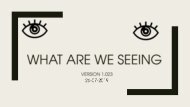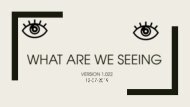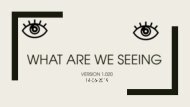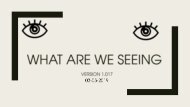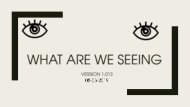Create successful ePaper yourself
Turn your PDF publications into a flip-book with our unique Google optimized e-Paper software.
2019 Global Economic and Market Outlook<br />
Other leading indicators – Recession 2020 is not a sure thing<br />
To this extent, we believe there is value in a range of indicators, particularly those related to the<br />
yield curve, labour market and cyclical momentum. Our ten most-favoured indicators are outlined<br />
below (and discussed in more detail here). These have tended to provide a leading signal 10 to 37<br />
months in advance of a downturn.<br />
Of the ten indicators that we identify, only one has reached a level of concern for us – the 10-year<br />
less 3-month spread. While important to monitor, this can provide a substantial lead time – as it<br />
breached 100 bps 29 months ahead of the recession in 2007-09 and remained near or below 100<br />
bps for several years in both the 1960s and the 1990s.<br />
Only two of the ten leading indicators are “flashing yellow”: 1) the 2s10s spread, which fell<br />
significantly from February, but has now tracked broadly sideways for several months; and ii) the<br />
construction employment share, which has shown initial signs of slowing, with the 6-month change<br />
standing at 0.04ppts in October. The change has also decelerated for four consecutive months, but<br />
this is likely due to labour shortages, rather than a slowing in demand for construction employment.<br />
The remaining seven leading indicators imply no signs of concern at this stage, showing strong<br />
cyclical momentum in the labour market and broader economy. This suggests that, if history is any<br />
guide, we can be reasonably confident that the current expansion still has some way to go. As<br />
such, while we are cognisant of the possible downside risks going forward, we think that<br />
expectations for a US recession in either 2019 or 2020 are premature at the current juncture.<br />
Fig 17 Most recession ‘leading indicators’ suggest that the current expansion has some way to go, with seven of the ten<br />
indicators still green<br />
Category Variable Recession signal<br />
Average recession<br />
lead (months)*<br />
Current<br />
value**<br />
Criterion<br />
breached?<br />
Yield<br />
curve***<br />
10-year less 3-month yield Falls below 100bps 18 67bps Yes<br />
10-year less 2-year yield Falls below zero 17 23bps No<br />
Unemployment rate Troughs 10 3.8% (↓) No<br />
Labour<br />
market***<br />
Construction employment share<br />
Residential structures employment<br />
share<br />
6-month change <<br />
0.05ppts<br />
22 0.04ppts Yes<br />
Peaks 20 0.54% (↑) No<br />
Temp help services employment share Peaks 15 2.04% (↑) No<br />
Initial unemployment insurance claims<br />
6-month change ><br />
10,000<br />
13 -13,417 No<br />
Cyclical<br />
momentum<br />
Duncan leading indicator Peaks 16 0.3602 (↑) No<br />
Truck and bus equipment share**** Peaks 37 7.6% (↑) No<br />
Office structures, lodging, and truck and<br />
bus equipment share****<br />
Peaks 33 11.8% (↑) No<br />
Source: BLS, BEA, Macrobond, Macquarie Macro Strategy. *Based on recessions since 1969 or later, depending on data availability (see here for more<br />
detail). **Arrows indicate the direction of the current trend in variables for which the recession signal is “peak” or “trough”. ***All yield curve indicators are<br />
monthly averages, while labour market indicators are 3-month moving averages. ****Share of non-residential investment ex-energy.<br />
4 December 2018 14




